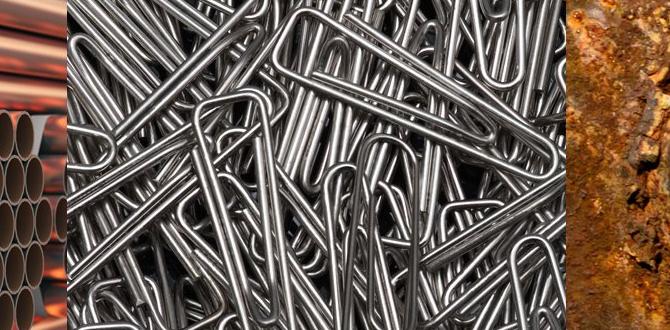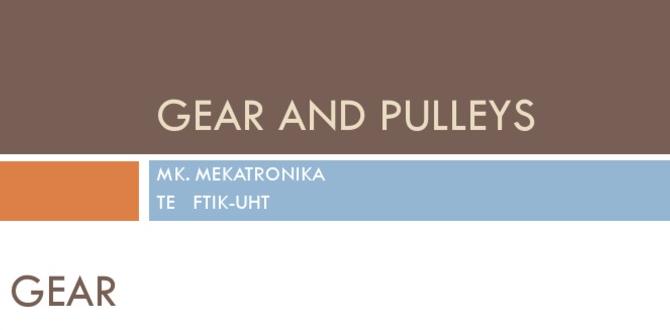Use a 35-degree TiAlN ball nose end mill for efficient roughing of materials like acrylics. This specialized tool excels at material removal, creating complex contours and preparing surfaces for finishing passes on CNC machines. Its design balances aggressive cutting with control, making it ideal for beginners tackling tougher jobs.
Hey there, fellow makers and machinists! Daniel Bates from Lathe Hub here. Ever stare at a block of material, like that beautiful sheet of acrylic, and wonder how to efficiently hog out the bulk of it before diving into those delicate finishing touches? It’s a common hurdle, especially when you’re new to CNC milling. You want to speed things up, but you also need precision and a tool that won’t fight you. The good news is, there’s a fantastic solution: the 35-degree TiAlN ball nose end mill. Let’s break down why this tool is a game-changer for roughing and how you can make it work wonders for your projects.
What is a 35-Degree TiAlN Ball Nose End Mill and Why Roughing?
Let’s start with the basics. An end mill is a type of milling cutter, essentially a drill bit that can also cut sideways. A “ball nose” end mill has a rounded tip, like a ball. This shape is perfect for creating curved surfaces, fillets, and contours. The “35-degree” refers to the helix angle of the flutes (the spiral grooves on the cutting surface). A steeper helix angle generally leads to a smoother cut and better chip evacuation, but a 35-degree angle strikes a great balance for roughing.
Now, why “roughing”? Roughing is the initial stage of machining where you remove the majority of the excess material quickly. Think of it like the sculptor’s first chisel strikes – you’re getting rid of the bulk to get closer to your final shape. Roughing aims for speed and efficiency, not perfect surface finish. This is where our 35-degree ball nose end mill shines.
The Power of TiAlN Coating
You’ll often see “TiAlN” mentioned. This stands for Titanium Aluminum Nitride, a PVD (Physical Vapor Deposition) coating. What does this mean for you? It’s like giving your end mill a super-tough, heat-resistant shield.
- Heat Resistance: TiAlN coatings can withstand higher temperatures than uncoated tools. This is crucial during roughing because aggressive material removal generates a lot of friction and heat. Keeping the tool cooler means it lasts longer and performs better.
- Hardness: The coating significantly increases the surface hardness of the end mill. This allows it to cut harder materials and resist wear, leading to more consistent cuts.
- Lubricity: TiAlN has good lubricity, meaning it reduces friction between the chip and the cutting edge. This helps chips flow away more easily, preventing them from welding onto the tool.
- Oxidation Resistance: It resists oxidation at high temperatures, which is a common failure mode for uncoated tools.
For a beginner, this coating means your tool is more forgiving. It’s less likely to overheat and fail prematurely, giving you more room for error as you dial in your feeds and speeds. It’s particularly beneficial when working with materials like acrylics, which can melt and gum up tools if not managed properly.
Why a 35-Degree Ball Nose End Mill is Great for Acrylic Roughing
Acrylic is a popular material for hobbyists and makers due to its clarity and ease of use. However, it can also be prone to melting and chipping. A 35-degree TiAlN ball nose end mill offers several advantages when tackling acrylic roughing:
- Chip Evacuation: The 35-degree helix angle is designed to help lift and evacuate chips effectively. For acrylics, this is critical. Poor chip evacuation can lead to recutting chips, increasing heat, and causing melting or a poor finish. The helix angle helps ensure those hot chips are cleared away from the cutting zone quickly.
- Smooth Contours: The ball nose shape is ideal for creating smooth, flowing curves and pockets. When roughing, you can establish these contours efficiently, leaving less work for your finishing passes.
- Reduced Vibration: The moderate helix angle can help dampen vibrations compared to very steep angles, contributing to a more stable cut, especially in thinner materials or when the setup isn’t absolutely rigid.
- TiAlN Coating Benefits: As mentioned, the TiAlN coating is your friend with acrylic. It helps prevent the material from sticking to the cutting edge, a common problem that leads to poor finishes and tool damage. The heat resistance is also a boon, as acrylic can melt easily.
Understanding “Roughing” in Practice
When we talk about roughing, we’re talking about aggressive material removal. This means:
- Larger Depth of Cut: You can typically take deeper bites into the material with a roughing end mill compared to a finishing end mill.
- Faster Feed Rates: You can push the tool faster through the material.
- Less Focus on Surface Finish: The primary goal is to get the shape roughed out, even if the surface looks a bit imperfect.
Using a 35-degree TiAlN ball nose end mill for this phase means you can remove material quickly while still establishing the basic form of your curved features, saving valuable time and reducing wear on your finer finishing tools.
Key Features to Look For
When choosing your 35-degree TiAlN ball nose end mill, keep these features in mind:
- Number of Flutes: For roughing, especially in materials prone to melting, fewer flutes can sometimes be beneficial. A 2-flute or 3-flute design generally offers better chip clearance than a high-flute count (like 4 or 6). For acrylic, 2-flute is often a sweet spot for roughing.
- Material of the End Mill: Most quality end mills are made from solid carbide. Carbide is extremely hard and can withstand the high temperatures and forces involved in machining.
- Shank Diameter: Ensure it fits your collet or tool holder. For roughing, a larger diameter end mill can remove material faster due to its increased cutting surface area.
- Coating: As discussed, TiAlN is excellent. Other coatings like AlTiN (Aluminum Titanium Nitride) are also good but might be better suited for different temperature ranges or materials. For general-purpose roughing on acrylics and many metals, TiAlN is a solid choice.
- Specific Ball Nose Radius: The radius determines the depth of the fillet or the roundness of the tip. Common radii are 0.5mm, 1mm, 2mm, etc. Choose a radius that matches the fillets or contours you’ll be creating.
Step-by-Step Guide: Using Your 35-Degree TiAlN Ball Nose End Mill for Roughing
Let’s get practical. Here’s how you can use this versatile tool to your advantage. Remember, safety first! Always wear your safety glasses and follow proper machine operation procedures.
Step 1: Material Preparation and Workholding
Ensure your material is securely clamped. For acrylic, use a method that won’t crack it, like clamps with soft jaws or double-sided tape for smaller pieces. Make sure the material is flat and parallel to the machine bed. The more stable your setup, the better your results will be.
Step 2: Tool Selection and Setup in the Machine
Choose the correct diameter and ball nose radius for your task. Insert the 35-degree TiAlN ball nose end mill into your machine’s collet chuck, ensuring it’s firmly seated. Double-check that the collet and tool holder are clean to prevent runout (wobble), which can lead to poor finish and tool breakage.
Step 3: Determining Feeds and Speeds
This is the crucial part, and it depends heavily on your machine, the specific material you’re cutting (e.g., different types of acrylic), and the end mill’s diameter. As a beginner, it’s best to start conservatively.
A good starting point for roughing acrylic with a 35-degree TiAlN ball nose end mill might look something like this, but always consult with the end mill manufacturer’s recommendations or a reliable machining calculator like the one from Carbide Probes:
| Material | End Mill Diameter | Spindle Speed (RPM) | Feed Rate (IPM) | Depth of Cut (in) | Chip Load (Thousandths per Tooth) |
|---|---|---|---|---|---|
| Cast Acrylic | 1/4″ (6mm) | 8,000 – 12,000 | 20 – 40 | 0.050 – 0.100 | 0.008 – 0.016 |
| Extruded Acrylic | 1/4″ (6mm) | 6,000 – 10,000 | 15 – 30 | 0.040 – 0.080 | 0.007 – 0.014 |
Important Notes on Feeds and Speeds:
- Chip Load: This is the thickness of the material removed by each cutting edge of the end mill. Too small, and you get rubbing and glazing; too large, and you can overload the tool.
- Spindle Speed (RPM): This is how fast the end mill spins.
- Feed Rate (IPM): This is how fast the tool moves through the material.
- Depth of Cut (DOC): How deep each pass is. For roughing, you’ll typically take larger DOCs.
- Coolant/Lubrication: For acrylic, keeping the material cool is key. Sometimes a high-pressure air blast or a mist coolant can help, but be careful not to spread chips everywhere. For metals, a standard cutting fluid is usually recommended.
Beginner Tip: If unsure, always start with conservative settings (lower RPM, slower feed rate) and a smaller chip load. Listen to the machine. A smooth whirring sound is good; a screeching or chattering sound means you need to adjust. You are aiming to efficiently remove chips, not melt the material.
Step 4: Setting Your Zero and Toolpath
Use your CNC machine’s probing system or a manual edge finder to accurately set your X, Y, and Z zero points. Program your toolpath in your CAM software, defining the areas you want to rough out.
For roughing with a ball nose end mill, you’ll often use strategies like:
- 3D Adaptive Clearing: This is a highly efficient roughing strategy that maintains a consistent chip load by dynamically adjusting the toolpath. Especially good for removing large amounts of material in complex shapes.
- Pocketing: For removing material from flat areas or pockets.
- Offsetting: For creating broader, curved shapes.
When roughing complex contours, you’ll typically use a larger stepover (the distance the tool moves sideways between passes) and a larger stepdown (depth of cut) compared to finishing. The ball nose shape will inherently create a stair-step pattern, which is perfectly acceptable for a roughing pass.
Step 5: Running the Roughing Pass
Once your toolpath is programmed and verified (using simulation in your CAM software is highly recommended!), you can run the job. Keep an eye on the cutting process:
- Chip Formation: Are the chips coming off cleanly, or are they melting and forming spaghetti?
- Sound: Listen for any unusual noises indicating stress or chatter.
- Temperature: While not always easy to monitor without special tools, be aware if the material or tool seems excessively hot.
If everything sounds and looks good, you can proceed with your programmed roughing passes. The TiAlN coating will help protect the tool from the heat generated.
Step 6: Inspection and Preparation for Finishing
After the roughing pass is complete, inspect your part. You should have removed the bulk of the material, and the basic shape should be established. There will likely be some “leftover” material or tool marks from the roughing process. This is normal!
The next steps would involve switching to a finishing end mill (which might be a ball nose or an end mill specific to the surface you’re creating) and running finer toolpaths with smaller stepovers and depths of cut to achieve the desired surface finish and dimensional accuracy.
When to Use (and When Not To) Your 35-Degree TiAlN Ball Nose End Mill
This tool is a workhorse for specific tasks. Knowing when to deploy it ensures you get the best results.
Best Used For:
- Roughing Complex Contours: Creating 3D shapes, curves, and sculpted surfaces.
- Preparing Pockets and Cavities: Quickly removing bulk material from enclosed areas before finer finishing.
- Materials Prone to Melting (with proper feeds/speeds): Acrylics, some plastics, and softer metals benefit from its chip evacuation and TiAlN coating.
- Achieving Fillets: The ball nose shape naturally creates rounded internal corners.
- Reducing Machining Time: Its ability to remove material quickly speeds up the overall process.
Not Ideal For:
- Achieving Perfectly Flat Surfaces: While a ball nose can create flat surfaces with a specialized strategy (like scallop or parallel finishing), it’s not its primary strength for a high-fidelity flat finish. A standard flat end mill is better for pure flat surfaces.
- Very Sharp Internal Corners: The ball nose tip will always leave a radius; it cannot create a sharp 90-degree inside corner.
- High-Precision Finishing of Small Details: For very intricate, detailed finishing, a smaller radius or a specialized finishing end mill might be required.
- Materials Requiring Exotic Coatings: While TiAlN is versatile, extremely abrasive materials might benefit from even harder coatings like Diamond or Si3N4.
Safety First: Always!
Machining can be dangerous if not approached with respect for the tools and the process. Here are some essential safety reminders:
- Eye Protection: Always wear safety glasses or a face shield. Flying chips are a serious hazard.
- Secure Workholding: Ensure your material cannot move during machining.
- Machine Guarding: Keep guards in place and never reach into a moving machine.
- Proper Tool Installation: Ensure your end mill is securely held in the collet.
- Listen and Observe: Pay attention to the sounds and sights of the machine. Unexpected noises often indicate a problem.
- Material Safety Data Sheets (MSDS): If machining new or unfamiliar materials, check their MSDS for handling and safety information. For instance, understanding the properties and potential hazards of certain plastics is crucial. WorkSafeBC’s guidance on SDS provides a good overview of why these are important.
- Emergency Stop: Know where your machine’s emergency stop button is and how to use it.
Taking the time to understand safety protocols will ensure your machining adventures are rewarding and injury-free.
FAQ: Your Beginner Questions Answered
Q1: What is the main difference between a roughing end mill and a finishing end mill?
A1: Roughing end mills are designed for rapid material removal with aggressive cutting geometry and often have special features like “chip breakers” (though our 35-degree ball nose has a helix angle that aids this). Finishing end mills have sharper edges and geometries optimized for smooth surface quality and dimensional accuracy, usually with smaller depths of cut and feed rates. Our 35-degree TiAlN ball nose is excellent for roughing, especially contoured surfaces.
Q2: Can I use a 35-degree TiAlN ball nose end mill for aluminum?
A2: Yes, absolutely! The 35-degree helix angle and TiAlN coating make it a capable tool for roughing aluminum. With appropriate feeds and speeds and potentially a cutting fluid or mist, you can achieve efficient material removal. Be sure to check manufacturer guides for aluminum-specific settings, as its machinability differs from acrylic.
Q3: Will this end mill leave a shiny finish on acrylic?
A3: Not on its own. Roughing, by definition, leaves tool marks and a less-than-perfect surface. The 35-degree TiAl






